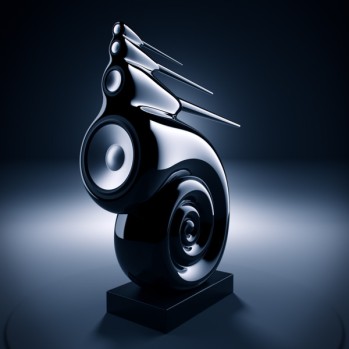There is a saying that goes: don’t judge a book by it’s cover. Most audiophiles will think that’s typical, because what you see doesn’t necessarily translate to what you hear. But in quite a lot of cases that I’ve experienced anyways, the outside does matter in some way. Now, that may be misleading in itself. I will tell you what I mean. For example, let’s say there are two speakers. One speaker has a rectangular box shape and the other does as well. Both have the same woofer but are made of different density materials. One of course is heavier than the other. If you know quite a lot about speakers being and audiophile, you’d say the heavier one would sound better. And you would be right.
In that case, the looks of the speakers are the same, hence they don’t matter in that case, but that’s why I say the outside matters because of the density. Like how speakers produce sound that is similar to actual instruments through a recording device, how the speakers’ shell matters too in that fact that the purpose of the shell is to hold the woofers which will produce the sound frequency, and direct that to the listeners’ ear. Essentially you don’t want the shell to vibrate and create unwanted frequencies that will distort the sound. That’s also why good audio equipment, especially speakers, are heavy. Anything heavy, and people will assume it’s good audio equipment, even if they don’t actually know anything about it.
Now, the truth is, what I mean by the outside does matter is because you can test and know how good they are by a simple test. I don’t know if anyone else does it personally, and maybe even call me ignorant, but what I truly want to bring up here is that you may see people knocking on the cabinets/shells of speakers (at least you might see me doing that). That’s the simplest and a rather sure way, in my opinion of knowing how good the speakers are. When knocking on the speakers’ cabinets (I’m guilty of doing this at stores, but if you do make sure it’s just like knocking on a door and don’t destroy demo samples), I listen for the sound the speakers make. The deeper and the softer it is, the better the cabinet, and hence the speaker is. In most cases this is what you pay for in speakers, because of the design of the cabinets/shells.

Some crazy styles like the B&W Nautilus series is what I’m talking about. Their rather high price is probably because of the design of the speakers and the difficulty of manufacturing them. I’m personally not a fan but it’s the only one I could think of with such a unique shape to them, which B&W claims does help with better sound production. But I feel that having such a complicated design to manufacture may not always be the best solution, as you may have seem from my recent entries.
As you may know there was a recent change over from the Sony SS-K10ED to the current NHT SuperZero that I’m currently using the moment. Long story short, I think in the looks department the Sony SS-K10ED bests the NHT SuperZero any day because the NHT SuperZero is boring in that it’s just a rectangular box. The Sony SS-K10ED has a teardrop shape which is unique in it’s own way. But it does sound better despite also being about three times smaller. And why do you think? When doing testing on these two speakers, one thing that I noted was that when doing the knocking test on both speakers, the NHT sounded way softer and didn’t resonate as much. Based on the very little resonant that I heard, it was a rather low-pitched tone compared to the Sony SS-K10ED, which was more resonant and had a higher pitched tone. That meant the cabinet/shell for the NHT was more braced and dense in general, and that is what I think contributed to quite a lot of their sonic qualities.
In the end, what matters in terms of the outside by what I mean is that the looks don’t always matter as it doesn’t always bring better sound quality, but how the outside feels in terms of density, material quality and what-not is rather more important. Sure, resonance reduction from the design of the cabinet/shell is also important, but to sacrifice that for looks do not translate to better sounding equipment. Well, that has been a rant that I’ve wanted to post about. Hopefully this was enjoyable to read. Until next time.


The outside matters a lot, more than 10 years ago I replaced the cabinets of a 4.1 system I had from Creative Labs. Using pine wood I made 2 very heavy cabinets each with 2 loudspeakers and using the exact same internal space the plastic cabinets had. The sound was so different even my wife noticed it. You can still find them if you search for creative labs 4.1 diy in Google image search. They work wonderfully but sadly my kids ruined the dust covers.
LikeLiked by 1 person
I would bet it did sound a lot better! The heavier cabinets would definitely do better to prevent any unwanted resonance, and doing something like that does sound like a nice project to take on. As I’ve mentioned as well, my NHT SuperZero is an example of how far you can take cabinet bracing with woofers that are pretty decent for a budget price of around $230 a pair new in 1993/1994. They compete with speakers that are at least three times their price (not to mention keep at least 50% of their price in a near perfect condition), which is something to behold. Anyway, it is quite sad that the dust covers on your Creative lab 4.1 got ruined. I’m kind of OCD about the dust covers in that anything less than perfect and I’d consider them quite ruined. They make up quite the important aesthetic presentation of a speaker then the grill is taken off.
LikeLiked by 1 person